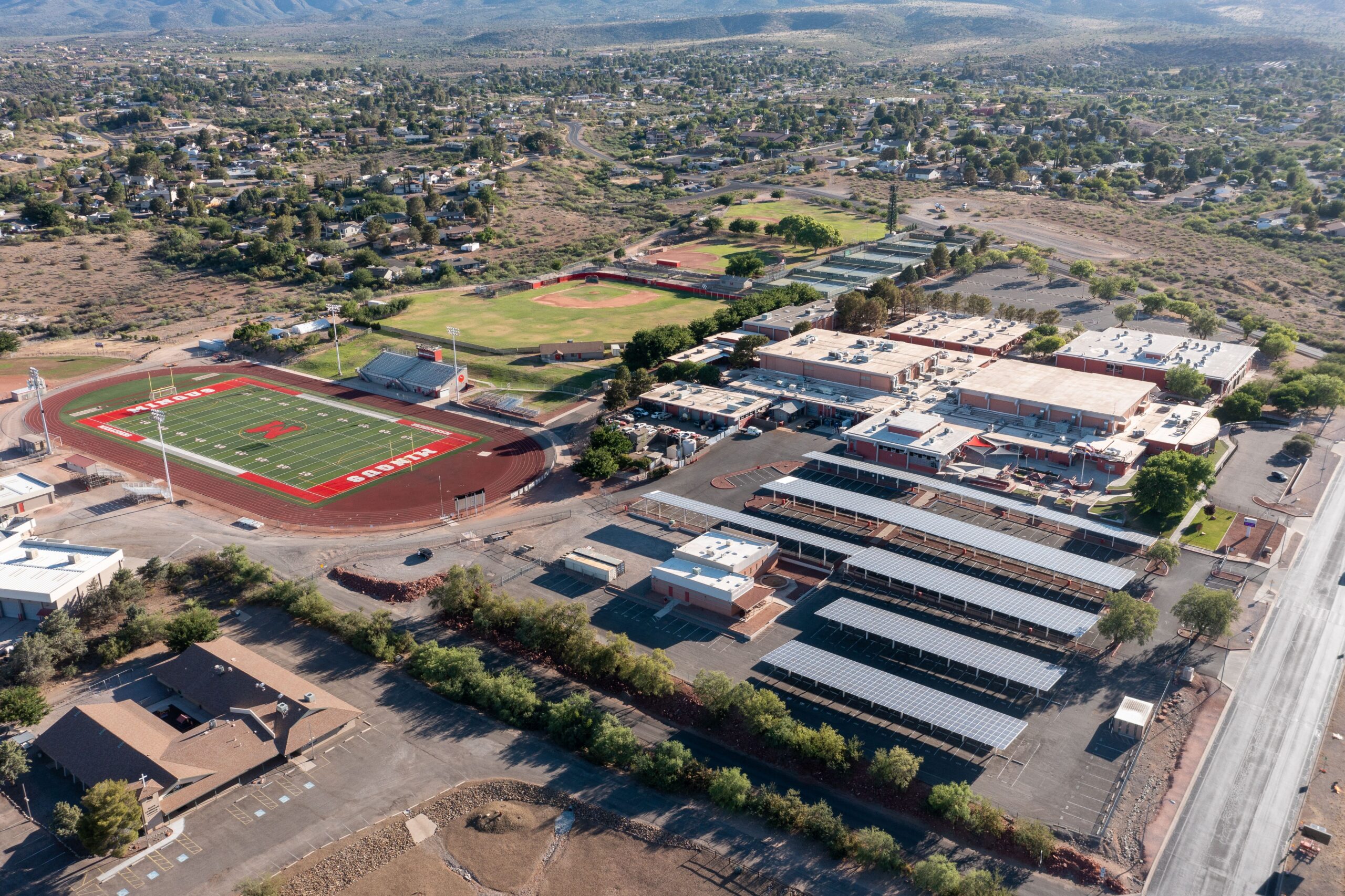Oak Creek School hosted its Winter Night of Sharing to celebrate its fifth year of after-school programs funded by a 21st Century Community Learning Centers grant on Thursday, Dec. 7, with a showcase of the program’s activities and evolution.
The grant is a five-year federal grant that funds afterschool programming. Oak Creek’s after-school program consists of one hour of academic support, a free dinner, enrichment clubs for one hour and transportation home. Students ideally go home with their homework completed for the night.
“It is special because it is the fifth year of having the after-school program out there,” said Teddy Armstrong, after-school program director for the Cottonwood-Oak Creek School District.
Oak Creek School was the first school in the district to receive the grant and is in its fifth year of funding, while Dr. Daniel Bright School is in its third year and Cottonwood Community School is in its second year. The three schools offer a total of 92 clubs, including archery, yo-yo club, mountain biking, dance, sewing, clay and coloring.
The robotics team went to state last year due to the support that the grant provided. The archery club is a new and popular addition to the program and students are gearing up to have tournaments with other schools soon. This year is also the first year OCS has had a school newspaper.
The program’s concert choir, the Roadrunner Choir, performed during the showcase. The after school choir is made up of students from kindergarten through eighth grades.
“We’ve grown some very sustainable partnerships with the community because of the after-school programming,” Armstrong said. “We have a lot of community support.”
Gardens for Humanity visits the school once a week to run an after-school club for the older students, while the Science Vortex partners to provide 3D printing and a Lego club for younger students.
“We really work with the school directly to bridge the academic and the school day with the afterschool day,” Armstrong said. School staff use test scores to determine where to add instruction during the after-school program, which has led to the introduction of additional math instruction. Armstrong works with the principal to decide what occurs in the academic portion of the program to maximize instruction. After-school programming has been shown to help improve grades within the participating schools.
“This is a model for what this kind of a grant can do in rural America,” Armstrong said. “Kids here have less opportunities than urban cities.”
She mentioned the example of one student who had never ridden a bike and can now ride miles on difficult trails as a result of participating in the mountain bike club.
“The program provides opportunities for kids to know what they like because they don’t even know what they like until they try something,” Armstrong continued. She added that essential skills, like sewing and cooking, are disappearing.
“We are holding on to these skills,” Armstrong said. “We’re building confidence.”
While this is the last year OCS will receive the grant, the school plans to reapply for it next year.



